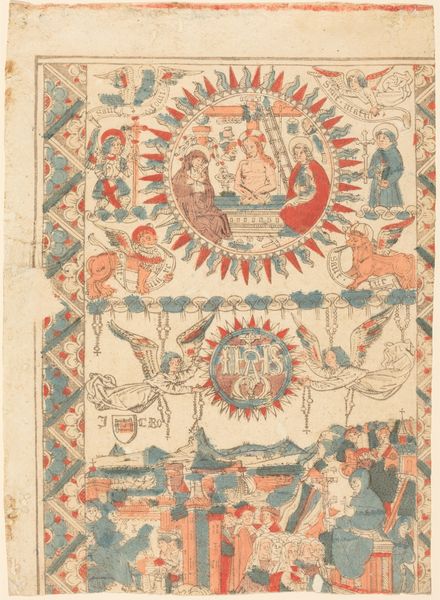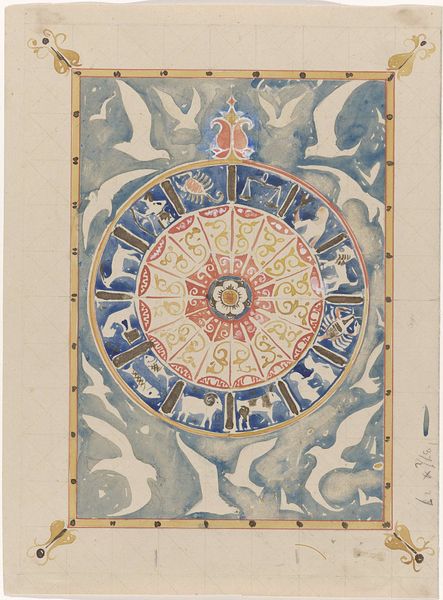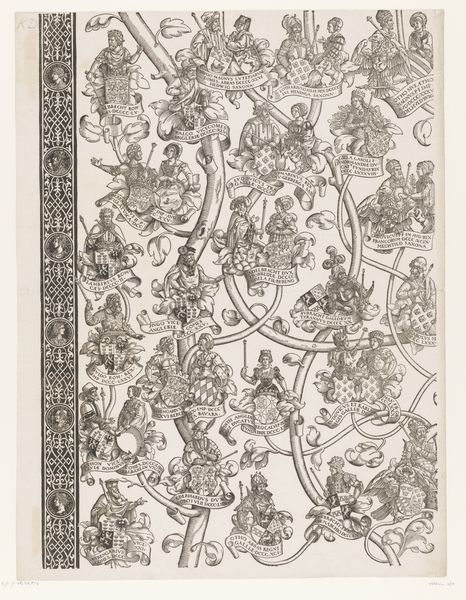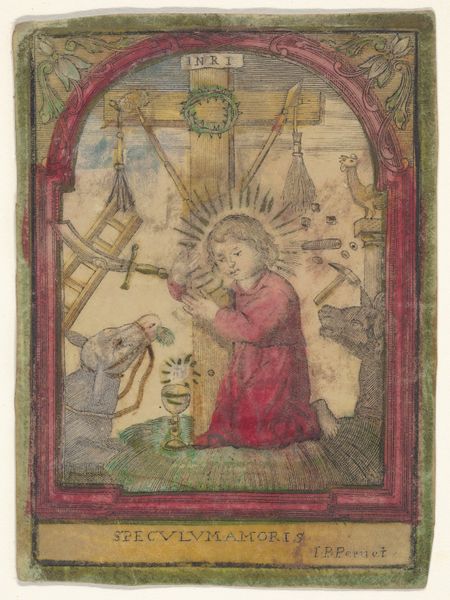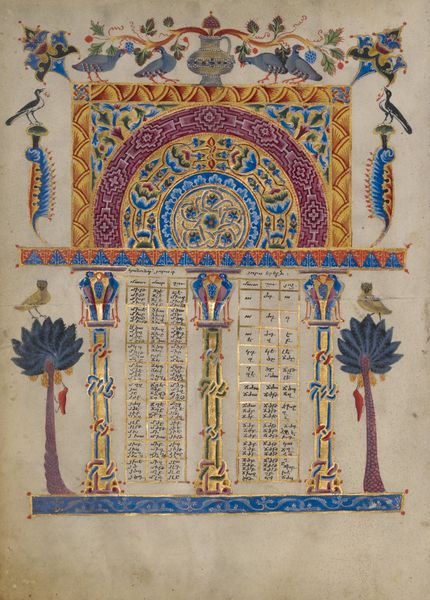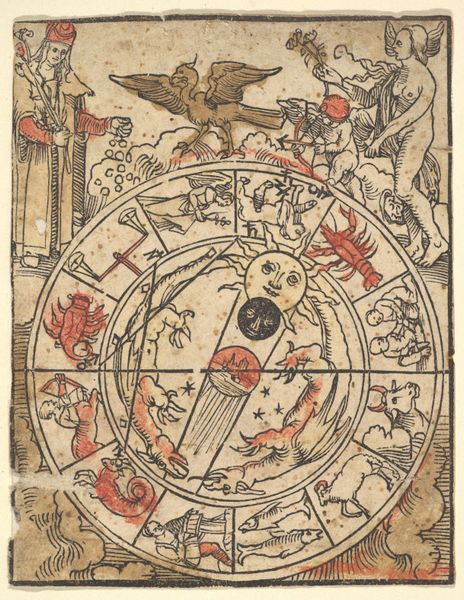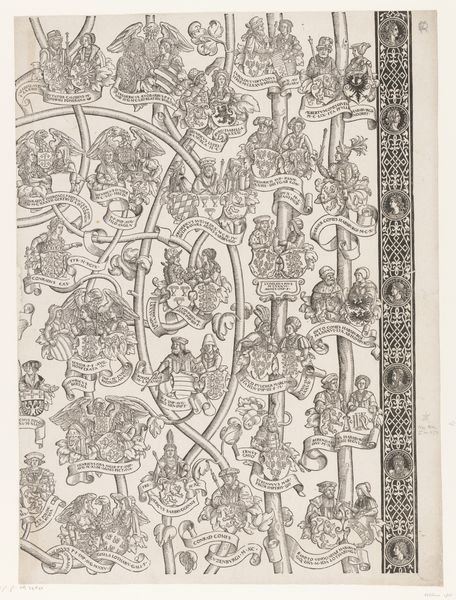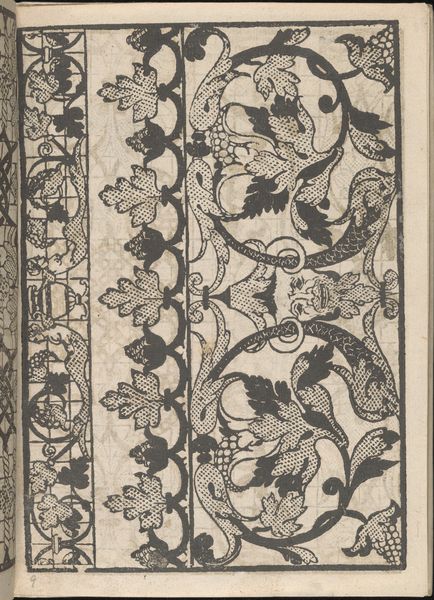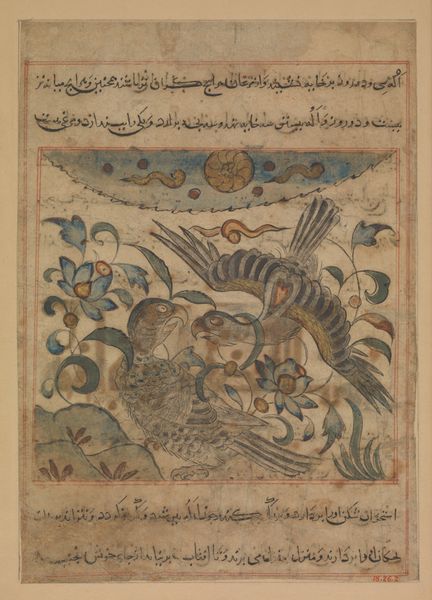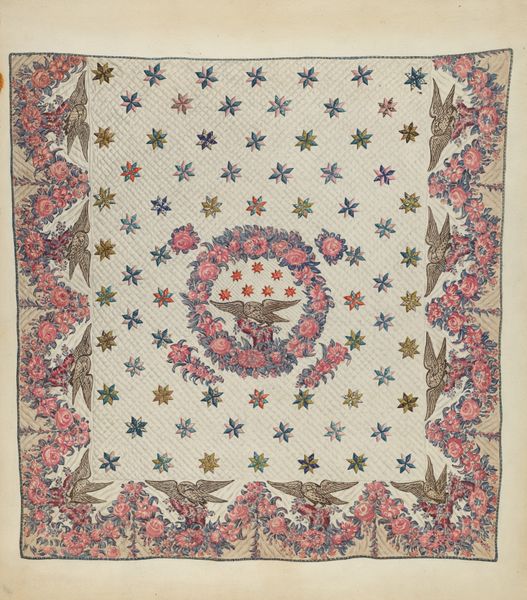
#
medieval
#
narrative-art
# print
#
gothic
#
figuration
#
line
#
miniature
Copyright: National Gallery of Art: CC0 1.0
Editor: This print, "Saint Bonaventure Arriving and Preaching in Lyon" from around 1480-1490, appears to be an anonymous piece. The medium looks like it could be a woodcut, perhaps with some hand-coloring? It reminds me of a page from a gothic illuminated manuscript but it's been mass-produced, which is a little bit strange. What stands out to you? Curator: It's intriguing how the artist blends the visual language of elite devotional objects with the emerging possibilities of printmaking. The availability of paper in this era allowed for wider dissemination of images like this, and we need to consider the implications this has for social agency. Note the specific choices in coloring - how would cheaper pigments alter consumption of such works in Lyon at the time? Editor: So the shift from manuscript to print, it democratizes these religious images? But it also maybe changes the materials people are used to seeing? Curator: Precisely! Think about the skilled labor involved in hand-illumination versus the labor in woodblock carving and printing. Are the intended audiences of this print also new compared to illuminated manuscripts? What would the price differences dictate? This shift reflects evolving consumption patterns and access to art. And further, how would mass production challenge earlier artistic value systems of "authenticity," or, perhaps, devotional effectiveness? Editor: That's a great point about value and devotional effectiveness. Because the more readily available it is, maybe the less special it becomes? I hadn't thought about the cost differences changing everything... Curator: And look at the depiction of Lyon itself. The materials and processes used to represent the city also carry cultural and historical weight. How might the choice of line and color impact the viewer's perception of the city's religious and economic significance? The imagery can also become a form of material propaganda. Editor: I guess, taking it all into consideration, it wasn’t made as precious of an object, because the intent wasn’t precious anymore either. Now, that’s an interesting view! Thank you! Curator: Absolutely, and analyzing these choices around production opens up a lot of questions about artistic intention and consumption!
Comments
No comments
Be the first to comment and join the conversation on the ultimate creative platform.
